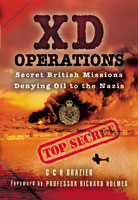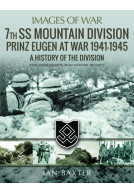Horsemen in No Man's Land (Paperback)
British Cavalry and Trench Warfare, 1914–1918
Imprint: Pen & Sword Military
Pages: 293
Illustrations: 30
ISBN: 9781526761231
Published: 16th October 2019
(click here for international delivery rates)
Order within the next 8 minutes to get your order processed the next working day!
Need a currency converter? Check XE.com for live rates
| Other formats available | Price |
|---|---|
| Horsemen in No Man's Land ePub (7.5 MB) Add to Basket | £6.99 |
Of what use were the British cavalry during the years of trench warfare on the Western Front? On a static battlefield dominated by the weapons of the industrial age, by the machine gun and massed artillery, the cavalry were seen as an anachronism. They were vulnerable to modern armaments, of little value in combat and a waste of scarce resources. At least, that is the common viewpoint. Indeed, the cavalry have been consistently underestimated since the first histories of the Great War were written. But, in light of modern research, is this the right verdict? David Kenyon seeks to answer this question in his thought-provoking new study. His conclusions challenge conventional wisdom on the subject - they should prompt a radical re-evaluation of the role of the horseman on the battlefields of France and Flanders a century ago. Using evidence gained from primary research into wartime records and the eyewitness accounts of the men who were there - who saw the cavalry in action - he reassesses the cavalry's contribution and performance. His writing gives a vivid insight into the cavalry tactics and the ethos of the cavalrymen of the time. He also examines how the cavalry combined with the other arms of the British army, in particular the tanks. His well-balanced and original study will be essential reading for students of the Western Front and for anyone who is interested in the long history of cavalry combat.
David Kenyon’s book is essential reading for a balanced view of cavalry on the Western Front and also for those interested in the long history of cavalry.
The Clench Spring 2020 - reviewed by Liveryman and Honorary Archivist Peter Clayton
Academic but extremely readable, it is fully referenced and has a series of seven tightly focused appendices. The long-held and inaccurate view of overall inadequacy of cavalry operating in the incredible adverse terrain and against the implacable vicious power of the machine gun is fully corrected.
The book is, in its way, also a more than fitting obituary and farewell salute to the end of centuries of the horse as the pre-eminent and fighting arm of warfare.
Horses and cavalry are often regarded as an old fashioned trait of the British army in World War 1. In a time of machine guns, what use could horses be?
Tastes Through Time
David Kenyon explains wonderfully how adaptive the horsemen were from supplies to combining their efforts with other ranks of the Britsh Army. With some wonderful firsthand photographs and pages of bibliography, souces and notes this is a must for any sort of study into the first world war. Packed full of history and resources it is surprisingly a nice easy read.
Read the full review here
The book contains some poignant photographs, including a complete cavalry regiment paraded by squadrons, and the bourse lines behind the front line. To that end, if you had to own just one book on the cavalry during the Great War, this is an excellent purchase.
Jon Sandison, Freelance
The book is, despite much technical content, highly readable and moves at a good pace through the early battles... It is well illustrated with some good maps and photographs. Personally, I found it most interesting.
The Long, Long Trail
It covers in equal detail the opening campaigns of 1914, the Somme Battles, Cavalry on the Hindenburg Line and Arras, Cambrai, Operation Michael and the final Hundred Days of 1918. Kenyan provides the readers, long accustomed to tale of horses charging vainly into certain death ala- Charge of the Light Brigade style, with the truth of the matter.
British Cavalry and Trench Warfare, Suite 101
This is a well-researched examination of an otherwise obscure chapter in the history of the First World War.
History of War
Now David Kenyon, an historian and horseman and an established Great War archaeologists, has called a compellingly powerful advance against the naysayers and received opinions. As well as describing the cavalry milieu, it’s thinking, organisation and its frequent dismounted deployment concentrates on its activities in the role most would consider traditional.
The Western Front Association, Stand To! No 93
Kenyon’s arguments are logical and largely persuasive and well expressed.
Horsemen in No Man’s Land is a book which serves wide readership.
The accepted history of the British cavalry’s contribution during the protracted stalemate of trench warfare is uninspiring. This book by David Kenyan sets out to entirely reset perceptions of the subject. The resulting work is genuinely thought-provoking and mounts a serious challenge to the long- proffered negative view of the cavalryman on the Western Front. This is a well researched insight into the use of British and dominion cavalry formations throughout the Great War. It will certainly trigger discussion and perhaps some rebalancing of opinion- I enjoyed having my view changed.
Soldier Magazine, Feb 2012
… is a long overdue analysis of the role played by British and Indian mounted troops during the campaigns on the Western Front. The author brings to bear his lifetime to equestrian experience in re-assessing the successes and failures of the Cavalry Corps and has managed to bring the text to life with some excellent maps and photographs. The Foreword to the book by Richard Holmes was one of his last chances to cast his eye over the work of a fellow historian and he wholeheartedly commends Kenyon’s analysis and endorses his conclusion that the cavalry’s contribution to the successful execution of the war has been under-appreciated.
Guards Magazine
This is a well balanced and considered study of the tactics and ethos of the cavalryman and makes for absorbing reading.
The Great War, Nov 2011
Kenyon argues that below brigade level the cavalry was tatically effective. Commanders on the ground were able to react to local situations with some degrees of success – it was at higher levels that the failings occurred…
Britain At War, October 2011
It is a more than admirable effort, and sheds new light on wider issues, beyond general misconceptions.
Daly History Blog
A well balanced examination of the role of cavalry in the Great War that corrects the common assumptions about its role and effectiveness that have been bequeathed by lazy and simplistic history.
Michael McCarthy
Michael McCarthy. Battlefield Guide
About David Kenyon
Dr David Kenyon has had a lifelong interest in military history. A keen horseman himself, he has dedicated many years to the study of mounted combat in the nineteenth and twentieth centuries, and in the Great War in particular. He is also one of the most experienced Great War archaeologists in the UK and has worked all over Britain as well as in Europe and the Near East. He was the lead archaeologist on the television project Finding the Fallen, and he has contributed to Great War programmes for the BBC and other broadcasters. He is the archaeological director of the Thiepval Wood Great War archaeology project in France, and a consultant to the Seddulbahir Fortress project in Gallipoli.

















